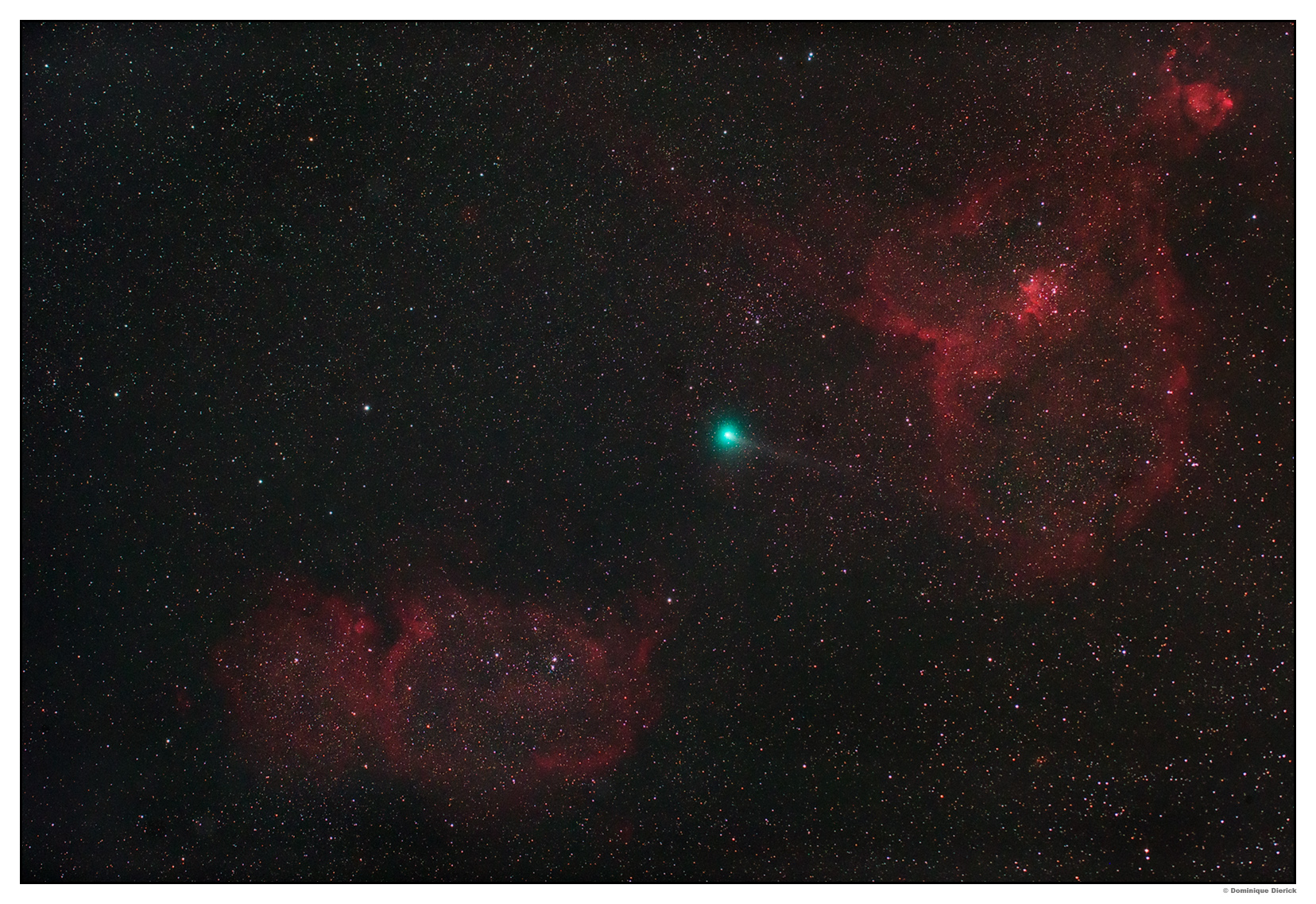In a three-body system in orbital mechanics, there are five points where the combined gravity of the two larger objects can affect the orbit of the smallest body in the system. The combined gravity will provide the right centripetal force to allow the small body to orbit with the other two objects. These points are called Lagrangian Points, after Joseph-Louis Lagrange who published an essay on three-body physics.
Three of these points are collinear, i.e. lie along the line connecting the centers of the two larger masses. However, these points are unstable. A slight deviation in the location or the speed will cause the smallest mass to move towards either other mass, depending on which direction it moves. The other two points are coplanar, i.e. lying in the same plane as the other two masses. These two points create an equilateral triangle with the two larger masses.
Note: there is a point between the yellow mass and the blue mass where the gravity from each mass is completely cancelled out. L1 is not at this point.
L1 is the first Lagrangian Point and is located between the two masses. It is closer to the smaller mass since an object would need to be closer to the smaller mass to have a larger influence from the smaller mass. For the Sun-Earth system, L1 is 1.5 million km from Earth, outside the radius of the Moon's orbit.
L2, the second Lagrangian point, is located opposite L1 around the smaller mass. Its distance is approximately the same as L1.
L3 is opposite the smaller mass on that mass's orbit. It may seem counterintuitive that L3 balances the forces from the two masses, but the small mass does have a gravitational influence on the larger mass, L3 has the same orbital period as the small mass. L3 is very unstable and it would be practically impossible to keep a satellite there for any extended period of time without making adjustments with small thrusts of rockets.
L4 and L5 lie approximately on the orbit of the small mass, either 60° ahead or 60° behind. These two points are the most stable because the distance from either mass is the same. The gravitational force from each object is at the same ratio as the two masses, causing the total net gravitational force to act through the common center of mass.
It should be noted, that L3, L4, and L5 do not lie exactly on the smaller mass's orbit, but a little outside.
This post is not intended to make you an expert on Lagrangian Points, but to give you an idea of what they are. The Greek asteroids and Trojan asteroids near Jupiter lie near the L4 and the L5 points of the Sun-Jupiter system and will be the next topic.
If you have any questions, please feel free to ask me. Post a comment here, write on my Google+ wall, or tweet me (
patronaut0709). I'll try to answer your question as well as I can.



























